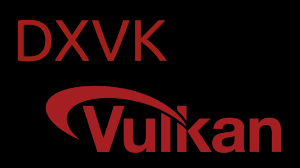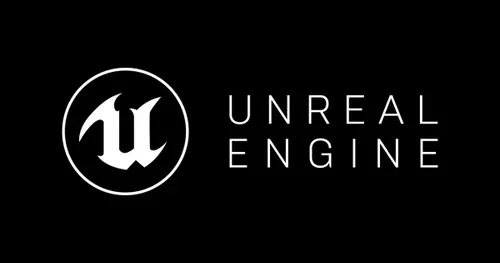DXVK, a powerful open-source translation layer, has become a go-to solution for gamers looking to enhance their experience on Linux and other non-Windows platforms. By translating DirectX 9, 10, and 11 API calls to Vulkan, DXVK enables Windows games to run efficiently on Linux systems, offering a compelling alternative to native Windows gaming. For Steam users, the integration of DXVK with the Steam platform, particularly through tools like Proton, has revolutionized cross-platform gaming, making it a topic of keen interest.
The question of whether DXVK supports Steam games is central for Linux gamers who rely on Steam’s vast library. DXVK’s compatibility with Steam largely depends on its integration with Proton, Valve’s compatibility tool, which leverages DXVK to run Windows-only titles on Linux. This synergy has opened up thousands of games to Linux users, but understanding the specifics of DXVK’s role, its setup, and its limitations is crucial for a seamless gaming experience.
This article dives deep into DXVK’s relationship with Steam games, exploring compatibility, setup processes, performance benefits, and potential challenges. From understanding how DXVK works with Proton to troubleshooting common issues, we’ll cover everything you need to know. Whether you’re a seasoned Linux gamer or new to the platform, this guide provides actionable insights to maximize your Steam gaming experience using DXVK.
What Is DXVK and How Does It Work?
Understanding DXVK’s Core Functionality
DXVK is an open-source project that translates DirectX API calls (versions 9, 10, and 11) into Vulkan, a modern graphics API. This translation allows Windows games to run on Linux by converting graphics instructions into a format compatible with Linux systems. By leveraging Vulkan’s efficiency, DXVK delivers impressive performance, often rivaling native Windows environments. It’s a critical tool for Linux gamers seeking to play DirectX-based titles.
Integration with Steam’s Proton
Proton, developed by Valve, is a compatibility layer that integrates DXVK to enable Windows games to run on Linux via Steam. Proton bundles DXVK with other tools like Wine to handle game execution, making setup straightforward. Most Steam games marked as “Proton-compatible” rely on DXVK for graphics rendering. This integration simplifies the process, allowing users to play games without manual DXVK configuration in many cases.
Why DXVK Matters for Steam Users
For Steam users on Linux, DXVK bridges the gap between Windows-exclusive titles and non-Windows systems. It supports a wide range of games, from indie titles to AAA blockbusters, by translating DirectX calls efficiently. DXVK’s open-source nature ensures frequent updates, improving compatibility and performance. Its role in Proton makes it a cornerstone of Linux gaming, expanding Steam’s accessibility across platforms.
Which Steam Games Are Compatible with DXVK?
Checking ProtonDB for Game Compatibility
ProtonDB is a community-driven database that rates Steam games based on their compatibility with Proton and DXVK. Users can check ratings like “Platinum,” “Gold,” or “Silver” to gauge how well a game runs. Most DirectX 9, 10, or 11 games work seamlessly, while DirectX 12 titles may require additional tools like VKD3D-Proton. Always consult ProtonDB before purchasing a game for Linux.
Games That Work Best with DXVK
DXVK excels with games using DirectX 9, 10, or 11, such as:
- The Witcher 3: Wild Hunt – Smooth performance with high frame rates.
- DOOM (2016) – Excellent compatibility with minimal tweaks.
- GTA V – Runs well with proper configuration. Older titles and less demanding games often achieve “Platinum” status. However, compatibility depends on hardware, drivers, and Proton versions, so testing is recommended.
Limitations with Certain Titles
Some Steam games face challenges with DXVK due to anti-cheat systems, DirectX 12 requirements, or proprietary middleware. Multiplayer games like Destiny 2 or Apex Legends may not work due to anti-cheat incompatibilities. DirectX 12 games require VKD3D-Proton, which is separate from DXVK. Checking ProtonDB or community forums helps identify potential issues before launching a game.
How to Set Up DXVK for Steam Games
Installing DXVK on Linux
To use DXVK with Steam, ensure a compatible Linux distribution like Ubuntu or Arch is installed. Install Vulkan drivers for your GPU (NVIDIA, AMD, or Intel) using your package manager. DXVK is typically included in Proton, so enabling Steam Play in Steam’s settings is often sufficient. For manual setups, download DXVK from its GitHub page and follow the installation instructions for your system.
Configuring Steam Play with Proton
Steam Play simplifies DXVK usage. To enable it, go to Steam Settings > Steam Play > Enable Steam Play for all titles. Select a Proton version (e.g., Proton Experimental for newer games). Restart Steam, and Windows games will use Proton with DXVK automatically. For specific games, right-click the game, select Properties, and choose a Proton version to optimize performance.
Verifying DXVK Installation
To confirm DXVK is working, launch a game and check for Vulkan-related logs in Steam’s output or use tools like MangoHud to display rendering details. If a game fails to launch, verify Vulkan support with vulkaninfo in the terminal. Ensure your GPU drivers are up to date, as outdated drivers can cause DXVK to malfunction, impacting game performance.
Benefits of DXVK for Steam Games
Improved Frame Rates and Stability
DXVK often delivers performance comparable to or better than Windows for DirectX 9, 10, and 11 games. Vulkan’s efficiency reduces overhead, leading to smoother gameplay. For example, The Elder Scrolls V: Skyrim can achieve higher frame rates on Linux with DXVK than on Windows in some setups. Performance depends on GPU drivers and system optimization.
Reduced Resource Usage
DXVK’s Vulkan backend is lightweight, consuming less CPU and memory compared to native DirectX implementations. This benefits older systems or laptops with limited resources. Key advantages include:
- Lower CPU overhead for smoother multitasking.
- Efficient GPU utilization for better visuals.
- Reduced power consumption for laptops. These factors make DXVK ideal for budget-conscious gamers or those using modest hardware.
Cross-Platform Consistency
DXVK ensures consistent performance across Linux distributions, provided Vulkan drivers are properly installed. Games like Cyberpunk 2077 (with Proton) show stable frame rates on Linux, rivaling Windows performance. This consistency allows Steam users to switch between Linux systems without significant performance drops, making DXVK a reliable choice for cross-platform gaming.
Common Issues and Troubleshooting DXVK on Steam
Game Crashes or Launch Failures
Games may crash due to outdated Proton versions, incompatible drivers, or missing dependencies. Update Proton via Steam and ensure Vulkan drivers are current. Check ProtonDB for game-specific fixes, such as custom launch options. Common issues include:
- Missing Vulkan libraries – Install vulkan-tools and libvulkan1.
- Anti-cheat conflicts – Avoid games with invasive anti-cheat.
- Incorrect Proton version – Test Experimental or GE-Proton.
Graphics Glitches and Artifacts
Visual issues like flickering textures or missing models can occur with DXVK. These are often caused by GPU driver bugs or shader compilation errors. Update your GPU drivers and try switching Proton versions. Enabling DXVK’s async shader compilation via launch options (DXVK_ASYNC=1 %command%) can reduce stuttering. Community forums like Reddit or GitHub provide game-specific workarounds.
Performance Bottlenecks
If frame rates are lower than expected, check your system’s resources. Ensure no background processes are consuming CPU or GPU power. Use tools like MangoHud to monitor performance metrics. Overclocking or tweaking GPU settings may help, but ensure proper cooling. For persistent issues, consult ProtonDB or the DXVK GitHub for optimization tips tailored to your game and hardware.
Future of DXVK and Steam Gaming
Ongoing Development and Updates
DXVK is actively maintained by a dedicated community, with regular updates improving compatibility and performance. New releases often add support for recent games and fix bugs. Following the DXVK GitHub page or ProtonDB keeps you informed about updates. Valve’s investment in Proton ensures DXVK remains a core component, promising continued improvements for Steam users.
Integration with Steam Deck
The Steam Deck, Valve’s handheld gaming device, relies heavily on Proton and DXVK for its game compatibility. DXVK’s lightweight nature makes it ideal for the Steam Deck’s hardware, enabling smooth performance for titles like Elden Ring. As Steam Deck adoption grows, DXVK’s development will likely prioritize optimizations for portable gaming, benefiting all Linux users.
Expanding Game Support
As Vulkan adoption increases, DXVK’s role in supporting new Steam games will expand. Tools like VKD3D-Proton are addressing DirectX 12 compatibility, complementing DXVK’s capabilities. Community efforts and Valve’s support are reducing barriers for multiplayer and anti-cheat games, promising a broader range of playable titles. The future looks bright for Linux gamers using DXVK on Steam.
Conclusion
DXVK’s integration with Steam via Proton has transformed Linux gaming, enabling thousands of Windows games to run smoothly on non-Windows systems. From seamless setup to impressive performance, DXVK supports a vast array of Steam titles, though challenges like anti-cheat incompatibilities remain. By leveraging ProtonDB, updating drivers, and troubleshooting issues, gamers can unlock a robust gaming experience. As DXVK and Proton evolve, Steam’s cross-platform potential continues to grow, empowering Linux users worldwide.



